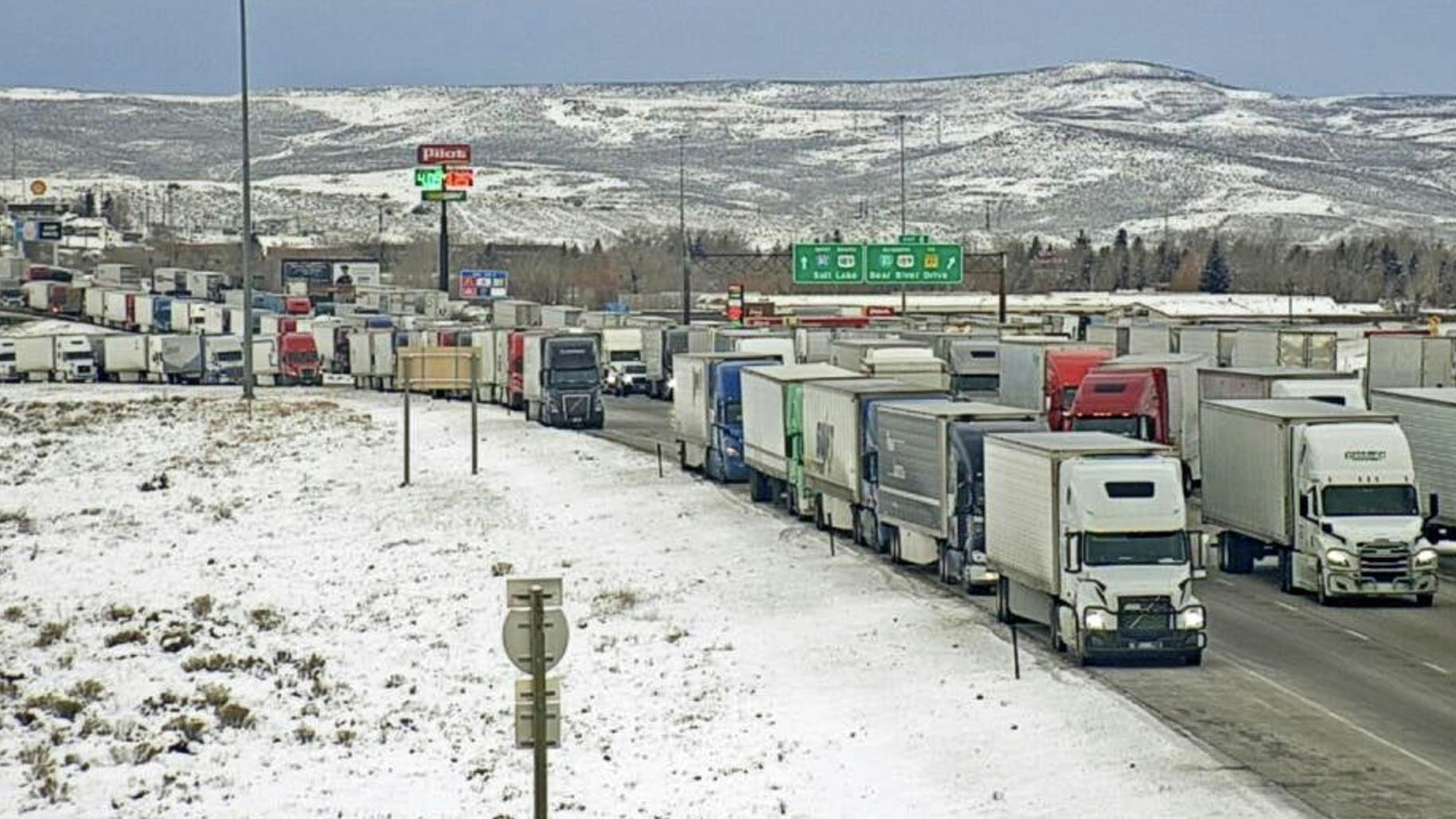Each time an 18-wheeler rumbles over Interstate 80 near Rock Springs and gets through the area without issue, there’s a collective sigh of relief.
Beginning in the Civil War era, coal companies dug out a labyrinth of underground mines in the Rock Springs area and shipped the black fuel to power steam engines, furnaces and forges.
The big worry in today’s Wyoming is the gradual caving in or sinking of these old mines in southwestern Wyoming — especially under the I-80 corridor with its heavy truck traffic.
The mines can fill up with water, causing their roofs to collapse with gaping holes opening on the surface.
In a few weeks, expect potential traffic delays at Exit 107, which empties onto Ninth Street in Rock Springs headed west along I-80.
This is when Wyoming closes one of the two westbound lanes to begin pumping grout — or cement — into a historic coal mine that runs under the interstate. The eastbound lane also will get shut down for work on that side of the interstate.
The Wyoming Department of Environmental Quality estimates 30,000 cubic yards of filler is needed. That’s the equivalent of 3 million square feet at 3 inches of depth.
“This is one of the larger projects that we’ve ever done,” said Don Newton, administrator of DEQ’s Abandoned Mine Land Division.
Concrete Jersey barriers will squeeze traffic into single lanes.
No cracks or sinking of the roadway has happened yet, but the DEQ wants to fill up the underground caverns and voids with concrete to prevent the road from opening up.
“This is preemptive work,” Newton said. “I don’t see this as an immediate problem, but these coal mines are over 100 years old.”
Abandoned Mine Money
The $10.5 million project is one of the largest ever for DEQ, which is funding the work through more than $35 million that it received this year for reclamation of abandoned mines.
Besides this historic coal mine, DEQ will use any remaining money to clean up uranium surface pits, silver, copper, bentonite and other old mining projects that dot the Cowboy State’s landscape, Newton said.
Wyoming is receiving the mining reclamation money in two disbursements.
This week, DEQ received $25.2 million for abandoned mine reclamation work as part of the Surface Mining Control and Reclamation Act (SMCRA). That nearly half-century-old law regulates mining by requiring cleanup of abandoned mines and requires Wyoming coal operators to pay 22.4 cents per ton of coal mined to the U.S. Treasury.
Half of that money is returned to Wyoming annually for cleanup work.
The state also received bonus funding this year for cleanup work.
The Infrastructure Investment and Jobs Act, signed into law in 2021 as part of the nation’s recovery efforts during the pandemic, gave Wyoming $9.5 million in January. This is actually an annual payment expected to total about $120 million through 2036.
This money is spent on cleanup of abandoned mines prior to 1977, the year SMCRA became federal law.
Uranium Cleanup Too
Three uranium mining districts in Wyoming also will receive reclamation money to smooth out the land using bulldozers, scrapers and blades to recontour the land to resemble the surrounding topography.
Vertical cliffs that tower several hundred feet will be knocked down with the heavy-duty equipment, or in some cases blown up to get the land evened out, Newton said.
In total, 500,000 to 2.5 million yards of dirt will be moved on each of the abandoned uranium sites, he said.
The three uranium surface pits slated for reclamation this year are in the Gas Hills district, located roughly 35 miles east of Riverton; the Crooks Gap, located 10 miles south of uranium boomtown Jeffrey City, between Crooks and Green mountains; and the Shirley Basin, an old uranium mining town located about 40 miles south of Casper.
All of them will be revegetated with sagebrush, flowering forbs and grasses from the plains, Newton said.
The Gas Hills, Crooks Gap and Shirley Basin uranium mining areas slowly disappeared from Wyoming in the last half century, prior to SMCRA’s passage, according to Newton.
Newton said that there are 40 abandoned mine sites that Wyoming will reclaim this year.
Pat Maio can be reached at pat@cowboystatedaily.com.





